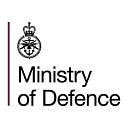In Pictures: No terrain too tough
British troops can find themselves operating in some of the toughest environments all over the world
For those of us in the UK, living in a desert, jungle or arctic conditions is not your typical environment. For our Armed Forces however, training and working in these environments is the norm.
Desert 🏜
The desert is one of the most difficult terrains on the planet. There is little protection from the elements, it is tricky underfoot and the temperatures can reach up to 50-degrees.
Jungle🦎
There can be few fighting environments that are more severe, challenging and unforgiving than the jungle. The humidity, the heat, the insects — everything works against you.
Arctic ❄️
Where the sun barely rises and the temperature plummets below minus 30 degrees, the artic conditions are life threatening to those who have not trained to survive.
Space🛰
While our soldiers, sailors and airmen and women are deployed around the world in these challenging environments, above the atmosphere satellite communications are essential to support these troops.
The origins of the Skynet satellites began in the 1960s, with Britain caught in the midst of the Cold War. In 1969 Britain launched Skynet 1A from the USA’s Cape Kennedy Complex, and her sister satellite, 1B, was launched the following year. These first steps in innovative technology led to several others and remains instrumental in helping British forces to communicate whilst deployed all over the world.
